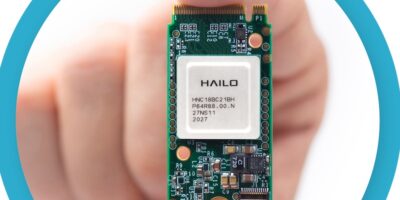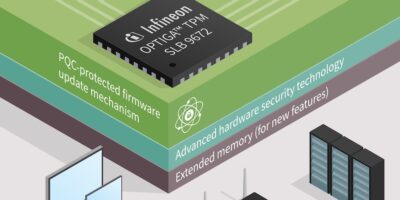AI chipmaker, Hailo has partnered with AI edge hardware manufacturer, Aaeon, to ensure that its latest UP Bridge the Gap branded hardware is compatible with the Hailo-8 M.2 AI acceleration module, to provide power efficient AI at the edge.
Edge computing requires increasingly intensive workloads for computer vision and other AI tasks, making it increasingly important to move deep learning workloads from the cloud to the edge. Running AI applications at the edge ensures real-time inferencing, data privacy, and low latency for applications across various markets, such as smart cities, smart retail and industry 4.0, said Aaeon.
UP Bridge the Gap edge modules pair the latest Intel processors with the Hailo-8 AI module to increase on-device inference and execution speed of AI models. Reallocating the computing resource of AI-based tasks from the CPU/GPU to the Hailo-8 neural processing unit (NPU) provides greater flexibility and possibilities for edge computing applications.
The Hailo-8 M.2 AI Module delivers 26T operations per second (TOPS) at what is claimed to be a record-breaking average rate of 2.5W. As a result, developers can run sophisticated deep learning and computer vision applications at the edge while keeping power consumption at a minimum.
The hardware which is compatible with the Hailo module includes the UP Squared Pro, which is based on the Intel Atom E3900 series (formerly Apollo Lake). According to Aaeon, it provides developers with power-efficient performance on a cost-effective device. The processors can reach speeds up to 2.5GHz. UP Squared Pro supports up to 8Gbbyte of LPDDR4 memory and offers up to 64Gbyte eMMC storage.
The UP Squared 6000 has the same compact form factor as the UP Squared Pro and is based on the latest Intel Atom x6000E series (formerly Elkhart Lake). The power-efficient platform offers up to 1.7 times better compute performance and twice the performance for 3D graphics as UP Squared Pro. It has a range of processor options to reach speeds from 1.90 to 3.0GHz. It is available with up to 8Gbyte of LPDDR4 memory and up to 64Gbyte eMMC storage.
There is also the UP Xtreme i11, featuring the 11th Generation Intel Core Processors (formerly Tiger Lake). It can clock up to 4.4GHz with only 28W TDP and 15W cTDP. It supports up to 64Gbyte with two slots for DDR4 SO-DIMM and offers a slot for a SATA III disk or NVMe disk.
The Hailo-8 M.2 AI Acceleration Module is now available for purchase as an add-on with these three modules.
“This partnership with Hailo benefits our clients even further with their growing demand for AI applications that run quickly and efficiently at the edge,” said Owen Wei, business development manager at Aaeon. “Hailo helps us bolster our offering while enabling a future powered at the edge,” he said.







